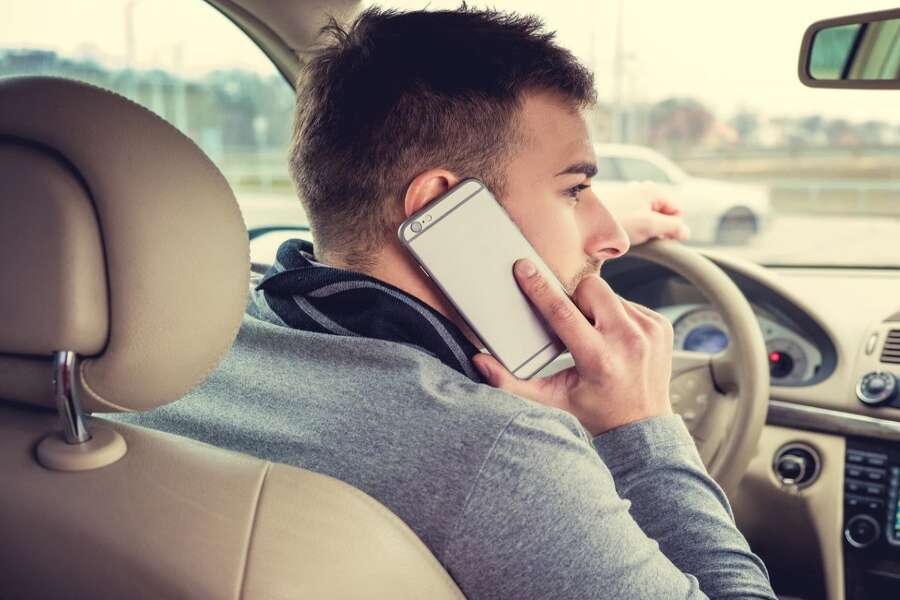While cell phone use behind the wheel has rightly become a focal point in discussions about distracted driving, the reality is that numerous other activities can divert a driver’s attention. In Ohio, understanding the full spectrum of distracted driving behaviors is crucial for both preventing collisions and seeking legal recourse when they occur. If you’ve been injured by a distracted driver, even if a cell phone wasn’t involved, a knowledgeable car accident attorney Dayton can help you explore your legal options.
The Wide Range Of Distracting Behaviors
Distracted driving encompasses any activity that takes a driver’s focus away from the primary task of operating a vehicle safely. Beyond the well-known dangers of texting or talking on a cell phone, a multitude of other actions can impair a driver’s reaction time and decision-making abilities. These distractions fall into three main categories: visual (taking your eyes off the road), manual (taking your hands off the wheel), and cognitive (taking your mind off driving).
Eating and drinking are common culprits, often requiring the use of hands and diverting visual attention away from other tasks. Adjusting the car’s radio, climate controls, or navigation system can also momentarily take a driver’s focus away from the road. Interactions with passengers, especially lively conversations or dealing with children, can create significant cognitive distractions.
Legal Implications Beyond Cell Phone Bans
Ohio law prohibits texting while driving and imposes restrictions on the use of other electronic devices by drivers under the age of 18. However, the legal concept of negligence extends beyond these specific prohibitions. If a driver engages in any distracting behavior that leads to an accident, they can be held liable for damages, even if a particular statute doesn’t explicitly outlaw that behavior.
To establish negligence in a distracted driving case, it must be proven that the driver had a duty of care to operate their vehicle safely, that they breached that duty by engaging in a distracting activity, that this breach directly caused the accident, and that the accident resulted in damages (such as injuries or property damage). This broad definition of negligence allows for accountability in situations where distractions other than cell phones are the primary cause of a collision.
Gathering Evidence Of Non-Electronic Distractions
Proving that a driver was distracted by something other than a cell phone can sometimes be more challenging, but it is certainly possible. Police accident reports may contain valuable information, such as witness statements describing the driver’s behavior before the crash. Eyewitness testimony can be crucial in establishing that a driver was eating, arguing with passengers, or fumbling with the radio at the time of the accident.
Physical evidence at the scene, such as food or beverage containers, spilled items, or the position of the radio dials, can also support a claim of distraction. In some cases, accident reconstruction experts can analyze the evidence and provide opinions on the likely cause of the collision, including potential distractions that contributed to the incident. A skilled car accident attorney Dayton will know how to gather and present this type of evidence effectively.
The Importance Of Thorough Investigation
A thorough investigation is paramount in cases involving non-electronic distracted driving. Unlike cell phone records, which can sometimes provide direct evidence of usage, other forms of distraction often rely on circumstantial evidence and witness accounts. This highlights the importance of acting promptly after an accident to preserve evidence and speak with potential witnesses.
Your attorney can conduct a comprehensive investigation, which may include interviewing witnesses, reviewing police reports, and potentially consulting with accident reconstruction experts. This diligent approach can help build a strong case demonstrating the other driver’s negligence due to distraction.
Seeking Compensation For Injuries Caused by Distraction
If you have been injured in an accident caused by a driver who was distracted by something other than a cell phone, you have the right to seek compensation for your losses. This can include medical expenses, lost wages, pain and suffering, property damage, and other related costs. Ohio’s personal injury laws allow injured parties to pursue damages from negligent drivers.
A knowledgeable car accident attorney can guide you through the legal process, negotiate with insurance companies, and represent your interests in court if necessary. They will work to build a compelling case demonstrating the other driver’s negligence and the resulting harm you have suffered.
Conclusion
While cell phone use is a significant concern in distracted driving accidents, it’s vital to remember that numerous other activities can divert a driver’s attention with equally dangerous consequences. Ohio law recognizes the concept of negligence beyond specific electronic device bans, allowing injured parties to seek justice when other forms of distraction, such as texting, cause collisions.


